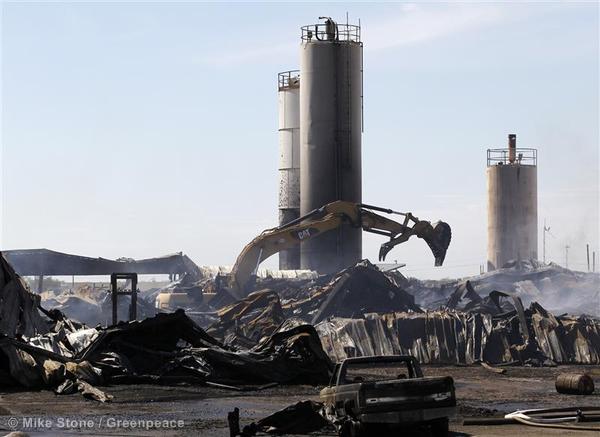Disaster after disaster has made it clear: unsafe chemical plants are a hazard to communities and a long-term threat to health. But it doesn’t have to be this way. Safer chemicals and processes are not only available, they’re more cost-effective.

Bhopal, India
On the night of December 2, 1984, a pesticide plant in Bhopal, India leaked 40 tons of deadly methyl isocynate gas into the city. 8,000 people died in the first few days following the leak, and 20,000 in total have died in the years since. Those still living in the area are exposed to toxic chemicals in their water and soil, contributing to cancer, birth defects, and chronic illnesses.
Though this disaster happened more than 25 years ago, the threat of another Bhopal is real.
West, Texas
Chemical incidents occur frequently in the U.S.
In 2013, an explosion at a fertilizer plant in West, Texas killed 15 people, injured hundreds, and leveled an entire neighborhood. There have been over 400 chemical incidents since West, Texas. Disaster after disaster has made it clear: unsafe chemical plants are a hazard to communities and a long-term threat to health.
Preventing Chemical Disasters
Chemical plant incidents like this are deadly, but they’re preventable.
Safer chemicals and processes are not only available, they’re more cost-effective. Greenpeace helped create the Coalition to Prevent Chemical Disasters, a diverse coalition of more than 100 environmental justice groups, major unions, public health organizations, environmental groups, and national security experts united in calling for prevention-based policies that require safer chemicals or processes wherever feasible.
